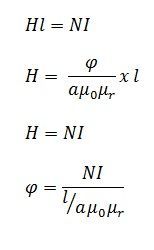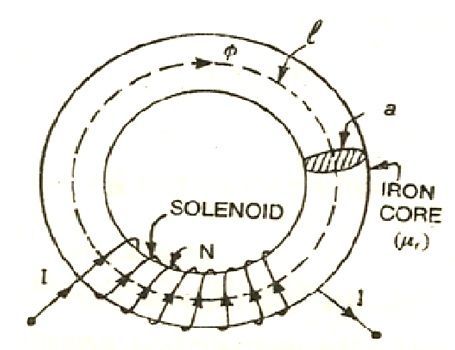Magnetic Circuit
The closed path followed by magnetic lines of forces is called magnetic circuit. In the magnetic circuit, magnetic flux or magnetic line of forces starts from a point and ends at the same point after completing its path. Flux is generated by magnets; it can be permanent magnet or electromagnets.
A magnetic circuit is made up of magnetic materials having high permeability such as iron, soft steel, etc. Magnetic circuits are used in various devices like the electric motor, transformers, relays, generators galvanometer, etc. Consider a solenoid was having N turns wound on an iron core. The magnetic flux of ø Weber sets up in the core when the current of I ampere is passed through a solenoid.
Let, l = mean length of the magnetic circuit
A = cross-sectional area of the core
µr = relative permeability of the core
Now the flux density in core material
A = cross-sectional area of the core
µr = relative permeability of the core
Now the flux density in core material

Magnetising force in the core

According to work law, the work done in moving a unit pole once round the magnetic circuit is equal to the ampere turns enclosed by the magnetic circuit.

The above equation explains the following points
- Directly proportional to a number of turns (N) and current (I). It shows that the flux increase if the number of turns or current increases and decreases when either of the two quantity decreases. NI is the magnetomotive force (MMF).
- Inversely proportional to l/a µ0µr, where (l/a µ0µr) is known as reluctance. The lower will be the reluctance the higher will be the flux and vice- verse.

No comments:
Post a Comment